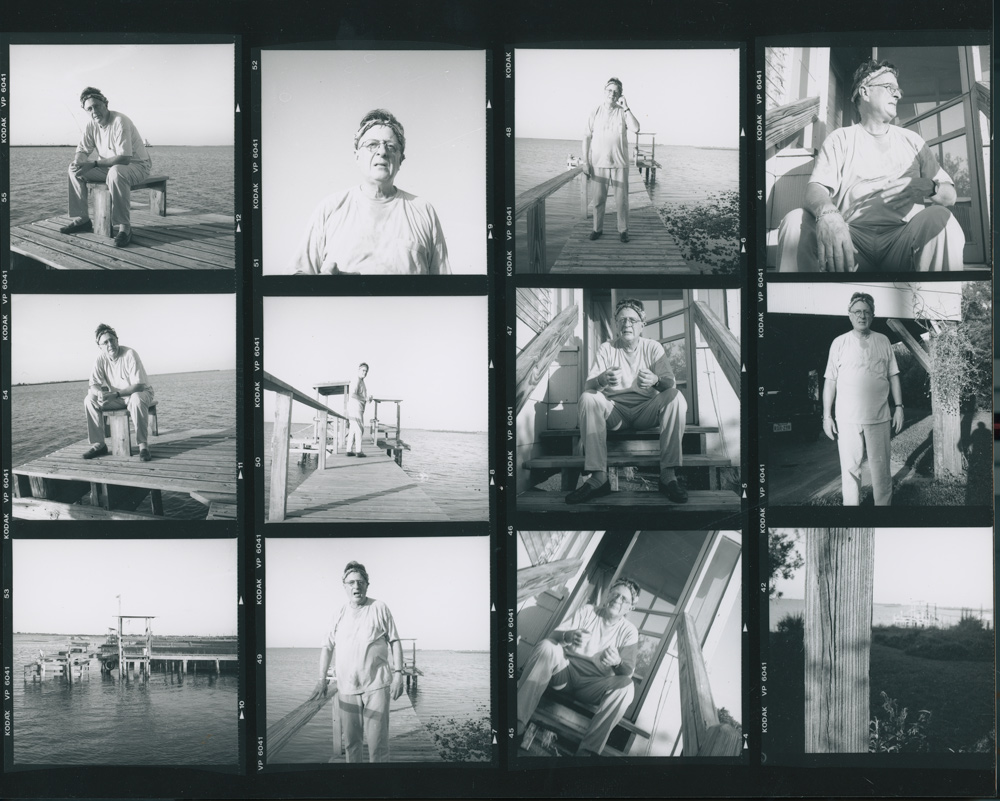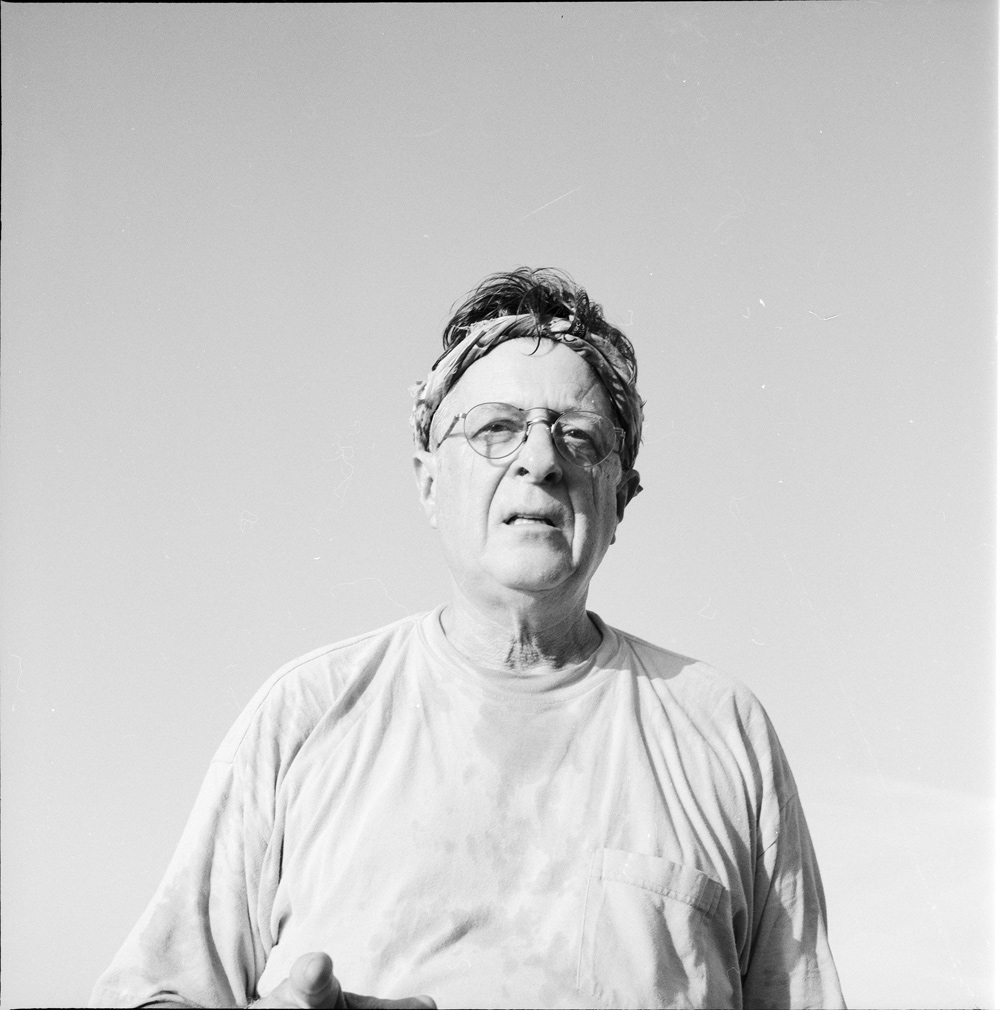We sat down with Richard Stout recently to pick his brain about the current state of the Arts in Houston, about his personal history as an artist, and to learn more about his friendship with Suzanne Paul – which we can see evidence of in the contact proof print we featured in last year’s Proof exhibition/catalogue.

Beaumont-born Richard Stout pursued his arts education at the Art Academy of Cincinnati and later at the School of the Art Institute in Chicago on a full scholarship awarded through the Scholastic Arts Program. From 1953 until 1957 he attended academic classes through the University of Chicago, Downtown, developed a studio practice during the Institute’s public hours and worked three jobs: Following a childhood interest in music he worked as an usher at the Chicago Symphony Center and combined his interest in other medias by shelving books in a bookshop and working in a record shop at the same time.
He describes a very rigorous experience for a young artist:
“As a student at the Art Institute at that time, we didn’t have full access to studios and could work only during the time that the museum was open – often arriving at 8am but had to leave by 5pm. All the other work had to be done at home, in addition to academic work, as well as various jobs. No dormitories – so students had to find a place to live and to support themselves.”
Students, as Richard puts it “worked like hell… producing vast amounts of work.” When he graduated Stout had under his belt some 13,000 works on paper – around 300 paintings on paper and canvas. By only one degree of separation, his arts instruction was world-class: “by second hand, I had almost everything you would desire to learn as a student of art.”
Upon graduation Stout was featured in a 1957 summer exhibition at the Wells Street Gallery, an avant-garde artist’s co-op led by artist Robert Natkin, alongside John Chamberlain. That was where Walter Hopps saw his work for the first time. His artwork would again accompany that of Chamberlain’s more than twenty years later when Jim Harithas organized his 1975 solo show, Richard Stout: Recent Paintings, in the basement of the CAMH, underneath the main gallery exhibition of Chamberlain works.
Stout came to Houston, as he says, because it “had all the things that I wanted: a climate I could live in, nice people, a new opera company and a pretty good orchestra, and most of all a Mies Van der Rohe wing of the MFAH being built – which was as good as it could get at the time. – Mies was the best thing you could get in terms of architecture.”
“Houston is a very friendly town. When I moved here, no one knew where it was. When all of my friends were moving to New York, from Chicago… they all said ..’Where is Houston? Is it near Dallas?”
Stout landed in Houston with only one contact from sale of an artwork in Beaumont – Preston John Frazier – and was almost immediately taken to the home of Henry and Leila Gadbois.
“Within a matter of days I met everyone… Ruth Ulher and Lowell Collins – both leaders of the Houston Museum School, now the Glassell School of Art; Lee Malone – then Director of the MFAH; Jermayne MacAgy – then the Director of the Contemporary Arts Association (now the CAMH); Nina Cullinan; Conductor of the Houston Symphony, Leopold Stokowski…“

Stout taught at the Houston Museum School for nine years and later in the art department at the University of Houston for over 30 years. While an assistant professor at UH, he was also the first Director of the Blaffer Art Museum and managed its inaugural season of exhibitions in 1973. During this time he was also pursuing, and received, his MFA from UT, “ commuting to Austin, two, sometimes three times a week to complete coursework in between teaching.”
During first year of school at UT, Stout met a would-be, UT-accepted, but not enrolled, young artist:
“The very first year, I met someone else who was supposed to be in the class, but they were in their own private studio.. and that was Michael Tracy. Michael Tracy is [one-of-two of my best friends.. Michael Tracy is in every way a most-interesting human being and I’m very proud to be a friend of his.
I do know that Suzy did a photo of him on my back porch but he didn’t like it. But that’s okay – Suzy would do that. She would do a portrait that would cut to the quick. I think that I started to see Suzy — I saw her a little bit, all along the way— but it was by the middle of the 90s, towards the end of the 90s… that would be ’99.”
Stout was represented by Meredith Long & Company for 27 years, which presented a solo-exhibition of Stout’s work every other year. Long & Company also represented Stout’s revered artist contemporary – Dorothy Hood, whom he mentioned in our conversation. Both were featured artists in MFAH exhibition Fresh Paint: The Houston School. Certainly a career highlight for Stout, this legendary group exhibition of artists from Houston made and broke careers. “Fresh Paint,” Stout recalls, “had to scramble to find women, african americans, and hispanics.”
Though the output of Richard Stout and Dorothy Hood is markedly different, there is an emotional depth and searching quality to both artist’s creative practice and in their paintings that is perhaps, and in large-part, missing among the work of my contemporaries. There is a willingness toward introspection and a willingness to engage in self-discovery in Hood’s and Stout’s work which I rarely get a sense of in most contemporary practices and processes.
“We all have that problem, with the work being done today… We all have problems with it because… I think in part it has to do with computer and digital material. You tend to work in a different medium and you work towards a rather obvious goal rather than discover a result. It’s goal oriented.”
Now in his 80s, the artist continues to produce critically acclaimed paintings in his Montrose studio. This fall in particular will be an active season for Richard as a retrospective of his work will be presented in three iterations across the state: at the Art Museum of Southeast Texas in Beaumont, at the Art Museum of South Texas in Corpus Christi, and the University of Houston, Downtown.

“About Suzy.. in the mid-90s…” Stout says, in between describing a painting he did of Suzanne’s and artist Mike Hollis’ home. “I would visit them 3 or 4 times a week. I [also] did a painting of the house building that faces Milam Street, with Suzy’s apartment on the right side… Suzy was very sensitive and very kind.. she was a very— she was a really good soul.We became very good friends, we spent a lot of time together in the last years in her great, wonderful Oldsmobile – that green barge – so classy, so Suzy… Suzy’s last show at Poissant Gallery was where she showed the broken obelisk pieces, which I think are wonderful, just wonderful.Suzy’s work, in some ways for me, was that pause that was in between this and that. She finds that little niche that is at once personal and private – and she catches you unawares…She was able to find and photograph the person between the facade self and the most magnificent human selves and our impression is that her skill and looking more deeply is amazing – “It’s amazing,” he says. “It really was, and it endeared her to me.”
***
Content originally published by Theresa Escobedo, here, on 4.14.17
